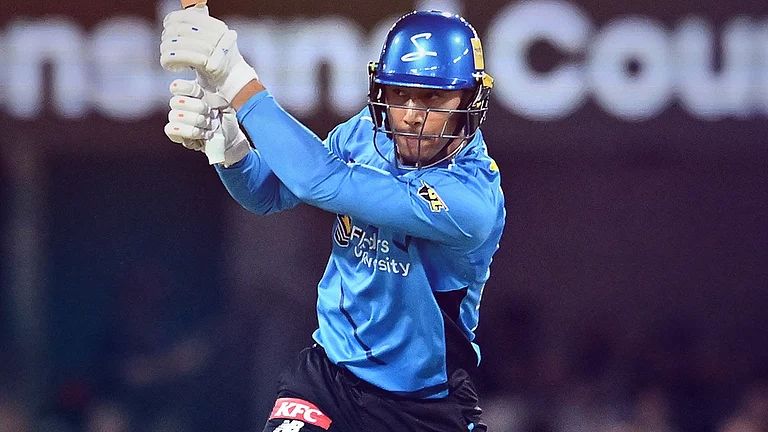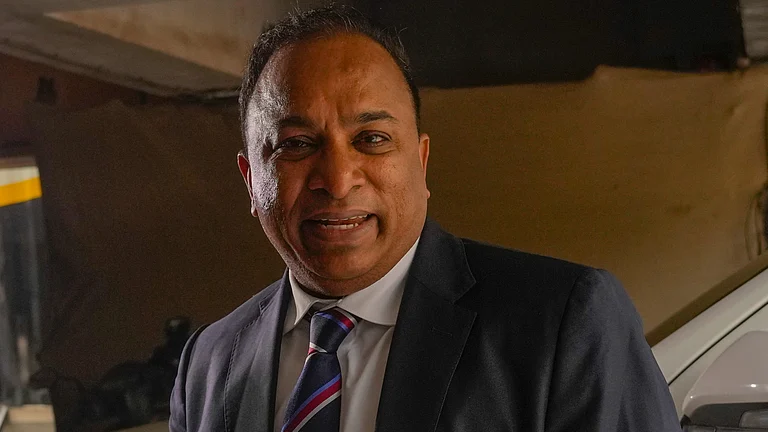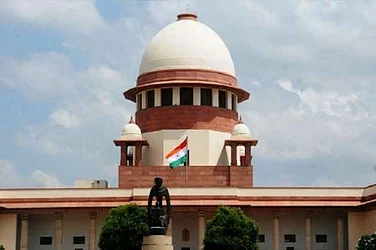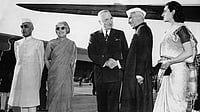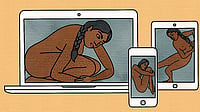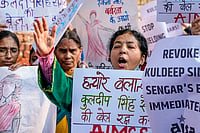Earlier this year, non-resident Indians (NRIs) like me watched from the United States and around the world the oath-taking ceremony of India’s 15th President, Droupadi Murmu. She is the first woman from the Adivasi (tribal) community to become the President of India.
Born into a Santhali family in a village in Odisha, and completing her college education despite tremendous hardship, Murmu’s story is one of grit and determination. Much of the media focus has therefore been on her journey, from her rise through the political rank-and-file, to holding high posts in government such as Member of Legislative Assembly and Governor of Jharkhand, to her current position.
What remains under-discussed, however, is that she also wields diplomatic powers as the President. While several of these may be ceremonial, such as the ratification of international treaties, or appointing and receiving career diplomats from the foreign service, she is the first citizen of the country whose symbolic powers extend to declaring war and peace. Until recently, India’s Minister of Defence —Nirmala Sitharaman— was also a woman. Sitharaman, an economist, is now the Union Finance Minister, who visited the United States this year for a bilateral meeting with the US Treasury Secretary, before the latter’s visit to New Delhi for the US-India Ninth Economic and Financial Partnership meet ahead of the G20 meeting.
What do these political events say about women in the traditionally male world of war and peace, international relations, and diplomacy? And, relatedly, about the relationship between the world’s largest and oldest democracies: India and the United States?
Diplomacy, unfortunately, remains a male bastion globally. Back in the late 1980s, a professor of International Relations at the London School of Economics, Fred Halliday, rued the discipline’s resistance to feminist analysis and the “invisibilisation” of women. In the same decade, a Women’s Foreign Policy Council was established by a group of Americans calling for more women to be appointed to senior foreign policy positions.
Thirty years later, two scholarly studies published in 2017-18 confirm that men still make up well over 80 per cent of the world’s ambassadors and almost 90 per cent of mediators in peace negotiations, and these two countries are no exceptions. Out of 28 Indian ambassadors to the United States since 1947, when India became free of British colonialism, only four have been women — the first was Vijayalakshmi Pandit (1949-51), who was also the first woman President of the United Nations General Assembly, and the most recent was Nirupama Rao (2011-13). America’s record here is no better — out of the 32 US ambassadors to India, including non-career appointees and interim charge d’affairs, only four have been women. The irony here is obvious. Given the cross-cultural stereotyping of women as peaceful and diplomatic, one would have expected to see many more women in diplomacy. This is similar to the cultural stereotype about women being naturally better when it comes to unpaid home cooking – problematically attributing to biology or gender identity what is more a matter of socialisation practices – even as a majority of top-paid chefs in hospitality hotspots and Michelin-starred restaurants worldwide continue to be men.
Of course, from the American women soldiers who committed acts of torture on male prisoners in Abu Ghraib, to women celebrating their men for raping the “other” religious community’s women in South Asia’s riots, to the everyday politics of mostly-female workplaces, women in power can sometimes exhibit no less of a propensity for violence and viciousness. Meanwhile, some men do demonstrate the qualities traditionally associated with women, such as empathy and kindness. That said, positions of power are still overwhelmingly held by men, women experience the impact of public policies in ways that are not always gender-neutral, and diverse leadership styles can better untangle real-world political knots. It was against this backdrop that the United Nations Security Council adopted Resolution 1325 on Women, Peace and Security to encourage greater inclusion of women in diplomacy.
Since women are not a monolith, greater inclusion of women from socioeconomically and other marginalised backgrounds is necessary. So is the inclusion of the LGBTQIA+ community which, in the United States, is a foreign policy priority. In India, members of the LGBTQIA+ community and their allies hailed with pride the Supreme Court’s 2018 verdict decriminalising homosexuality by reading down Article 377, a draconian colonial era law that had clubbed consensual homosexual acts with bestiality and other “unnatural offences” and that took over a century to be struck off. One hopes this progress in law will also be reflected in diplomacy.
During the bilateral talks, the Treasury Secretary highlighted the economic importance of Indo-US ties, strengthening supply chains, and investing in technological innovation and clean energy — all of which have gender and equity dimensions too. Economic prosperity requires political stability, so one also hopes for fewer war hawks on both sides, whatever their gender, to advance the cause of international peace.
This calls for multi-level diplomatic engagements. Harvard’s Kennedy School of Government Professor Emeritus Joseph Nye explains how American “smart power” combines hard power (military strategies, economic sanctions etc.) with soft power. Public diplomacy, or advancing foreign policy goals by engaging global public, is an example of the latter.
In his book Public Diplomacy: Foundations for Global Engagement in the Digital Age, University of Southern California’s Professor Nicholas Cull shares lively anecdotes on how the term was “the creature, if not quite the creation” of ex-diplomat turned Dean of Tufts’ Fletcher School of Law and Diplomacy Edmund Gullion. Cull also draws a distinction between public diplomacy and propaganda, with the former’s focus on flexibility, reciprocity, and cultural humility. The emphasis on culture, education, and citizen exchanges makes public diplomacy uniquely suited to inclusivity — and more ethical compared to militarisation, given the negative impact of armed conflict on women and girls.
An example is Diplomacy Lab, an initiative of the US Department of State’s Office of Global Partnerships that engages students and their faculty mentors from partner universities to tackle policy-relevant research questions. One Diplomacy Lab project at the University of Michigan was on the meaningful participation of women as negotiators in conflict, whose advisor is the Director of the Weiser Diplomacy Center, international relations expert John Ciorciari.
As the faculty advisor to a similar project on gender-based violence, which has had members of the Gender Policy Council in the White House join our meetings, I wonder if this university-government partnership model might work in India and elsewhere. Nye points out the important role played by self-criticism in building the credibility necessary for effective public diplomacy, which certainly underscores the need for a degree of intellectual freedom without always positing it in an antagonistic relationship with national interest.
The cross-fertilisation between feminist scholarship and diplomatic studies can be quite productive — especially if each is willing to acknowledge the other’s strengths. Meanwhile, since our language has not yet caught up with our laws and land to become fully representative for a democracy, with the Hindi word for ‘President’ still being Rashtrapati or head/husband of the nation, is it time to consider more inclusive language?








